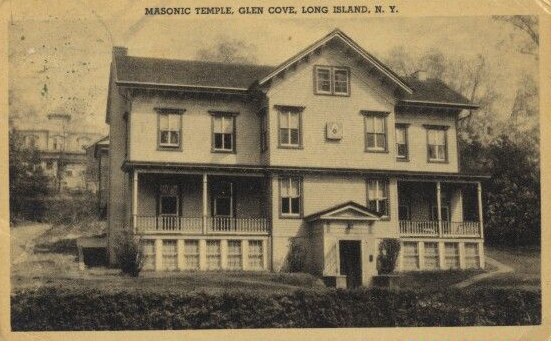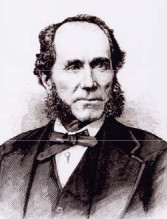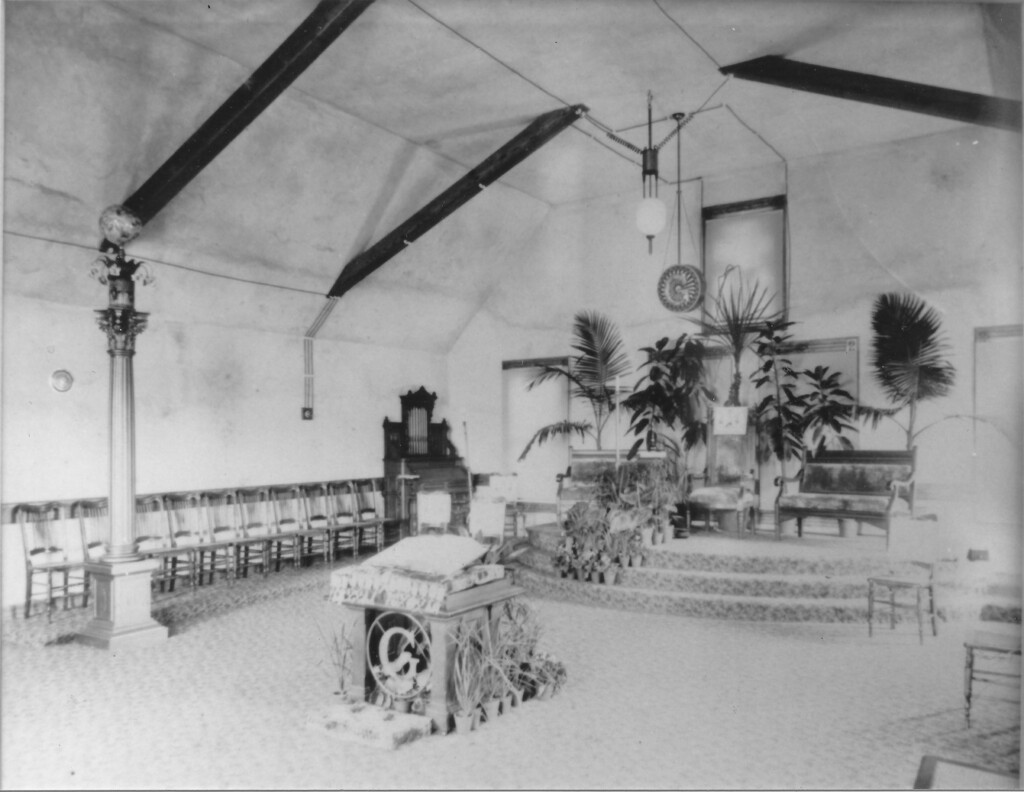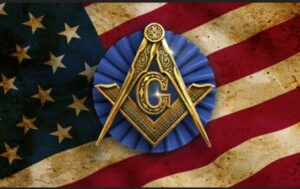The Descendant Lodges Of Jephtha No. 494
By W:. Ronald J. Seifried, DSA
Despite Long Island Freemasonry tracing its roots to Huntington Lodge No. 26 A. & Y.M. (1796-1818), there are no direct connections to it with Jephtha No. 494 F. & A.M. The challenges of traveling to a lodge in the late 18th and early 19th centuries through local, rural terrain prevented many of the 30 known brothers from attending lodge meetings. By 1806 all meetings ceased at Long Island’s first Masonic lodge, Huntington Lodge No. 26, and its charter was finally surrendered to the Grand Lodge of New York in 1818.
Forty-one years after Huntington Lodge No. 26 disbanded, seven charter members of Jephtha Lodge started laying the foundation for a new Huntington lodge in late 1859. Most were members of lodges meeting in New York City, including Joppa Lodge No. 201, Charter Oak Lodge No. 249 and Lexington Lodge No. 310. Only Charles Albert Floyd, Jephtha’s first Secretary, was from a Long Island lodge, Suffolk No. 401 in Port Jefferson. He was the son of John Floyd, a member from Huntington’s original Lodge No. 26 and a charter member of Suffolk Lodge No. 60 (1796).
In the mid-19th century, the geographical area comprising the present Nassau County was under the jurisdiction of Morton Lodge No. 63 in Hempstead, and the area of what is now western Suffolk County was under the jurisdiction of Jephtha No. 494 in Huntington. Because of these jurisdictional restrictions, any proposed, new Masonic lodge seeking dispensation had to petition the closest lodge for permission to form in a nearby town or to accept applications for membership.
Travel to and from a lodge was accomplished either by foot or using horses. In the History of Long Island by Peter Ross (1902), travel was depicted as follows: “Two members who lived on the north side of the Island, perhaps twenty miles from Hempstead, reached the Lodge by what is called the ride and tie method. That is, they both started together early in the morning, one riding the single horse on the farm, and the other walking. The rider proceeded to a place agreed upon where he tied the horse and took up his journey on foot. When the first walker reached the horse, he mounted and after passing his walking companion tied the horse again at another place of agreement. So, the journey was made to the Lodge, and the return on the following day was a repetition of the same.”
It would not be until the 1860’s, when Freemasonry was regaining popularity among men, that lodges started popping up on Long Island. The decades of the prolonged anti-Masonic period a few years earlier took its toll on the fraternity, with all lodges on Long Island shutting down for more than twenty years. In 1865, the American Civil War was ending and many returning veterans desired continuing fellowship in their hometowns. Freemasonry was the perfect organization for this post-war era.
In the following decades, brothers from Jephtha Lodge in Huntington set out to form three lodges in distant townships, becoming charter members of lodges that still meet today.
Glen Cove No. 580

At the January 9, 1865, Stated Communication, Jephtha brothers Edgar E. Duryea, Stephen B. Craft and James E. Benham and several other brothers from different lodges, formally requested a dispensation to form a lodge in Glen Cove. A series of jurisdictional objections from Morton Lodge No. 63 in Hempstead delayed Glen Cove No. 580 from obtaining its charter until March 1866.
Duryea was the founder of the successful Glen Cove Starch Factory where many of the Glen Cove charter members were employed, and he was a member of the famous Civil War Duryea Zouaves. After Edgar Duryea’s death in 1900, the Glen Cove Lodge continued to meet at his home.
Alcyone Lodge No. 695
In 1867, there were approximately twenty master masons residing in the villages of Northport and Commack, most of whom hailed from Jephtha No. 494 in Huntington. Desirous of forming a lodge in Northport, the brothers organized a masonic club and began the preliminary work of organizing a lodge. The brothers wrote the bylaws, set a $25 initiation fee and $3 annual dues. Officers for the proposed lodge were selected and several rehearsal meetings were held for the brothers to perfect the ritual and assure proficiency in the standard of the work, requirements for new masonic lodges.

When the brothers were confident that all the necessary requirements were in place, they proceeded to the next stage of creating a lodge. Brother William H. Sammis, past Junior and Senior Warden of Jephtha, was able to persuade the Huntington lodge to grant its consent on September 28, 1868. Originally called Northport Lodge, the petition sent to the Grand Lodge included 21 master masons, 17 of whom were members of Jephtha, including Jephtha’s charter member, Jesse Carll.
Later renamed Alcyone Lodge No. 695, the new Northport masons first met under dispensation on March 5, 1869, on the north side of Main Street in a building later occupied by the Long Island Express Company. Brother William H. Sammis, having sat in both Warden chairs at Jephtha, was qualified and appointed the first Master of Alcyone. The charter for Alcyone was granted on June 23, 1869.
On October 22, 1869, a delegation of brethren from Jephtha entered the new lodge under the leadership of W:. William H. King, Past Master, and presented Alcyone with a set of officer’s jewels as a token of affection and good wishes for the future. These jewels are still in use today by the officers of Alcyone Lodge.
Matinecock No. 806
In 1888, several master masons from Jephtha No. 494 and Glen Cove No. 580 residing in Oyster Bay, met to possibly secure a jurisdictional dispensation to form a lodge in Oyster Bay. Jephtha Lodge approved the new lodge without a dissenting vote, but Glen Cove Lodge gave the Oyster Bay brothers a difficult time. Glen Cove inserted a conditional clause in their dispensation that “the petitioners show their proficiency in the three degrees” that was required to be presented all in one day in Glen Cove. On July 24, 1889 the proficiency was examined and approved, but a series of further delays caused by Glen Cove Lodge, prevented Matinecock Lodge No. 806 from receiving its charter until 1892.

Nineteen of the forty-two charter members of Matinecock were from Jephtha, including Matinecock’s first Treasurer, Seth Surdam, and Brother Amos M. Knapp, a druggist at Snouder’s Corner Drug Store and confidential messenger for Governor, and later President, Theodore Roosevelt when he resided in Oyster Bay. Snouder’s had the only telephone in Oyster Bay Village, and Brother Knapp was designated to be the trusted individual called to the phone whenever a message came in for Roosevelt which he brought to Roosevelt at Sagamore Hill.
The lodge room was originally very sparse at the first meetings in Oyster Bay. The Altar Bible, the same used for the Masonic degrees of Brother Theodore Roosevelt, was donated by W:. J.K. Oakley and Jephtha Brother William Jones Youngs.; The new columns were made, decorated, and presented to Matinecock Lodge by Brothers Sidney B. Walters of Jephtha, Abraham Fain of Glen Cove No. 580 and William H. Hubbs of Alcyone No. 695.
Fellowship did not end with the formation of these three, new lodges. Jephtha has continued to participate in numerous degrees, District Deputy meetings, fundraisers, picnics, anniversary celebrations and funerals with its Masonic heirs for the last 150 years, an lasting unwavering relationship that continues to this very day. Jephtha is proud to be part of the rich history of Freemasonry on Long Island and its part in helping spread Masonic fraternity to other towns.
The post The Descendant Lodges Of Jephtha No. 494 appeared first on Jephtha.com.

